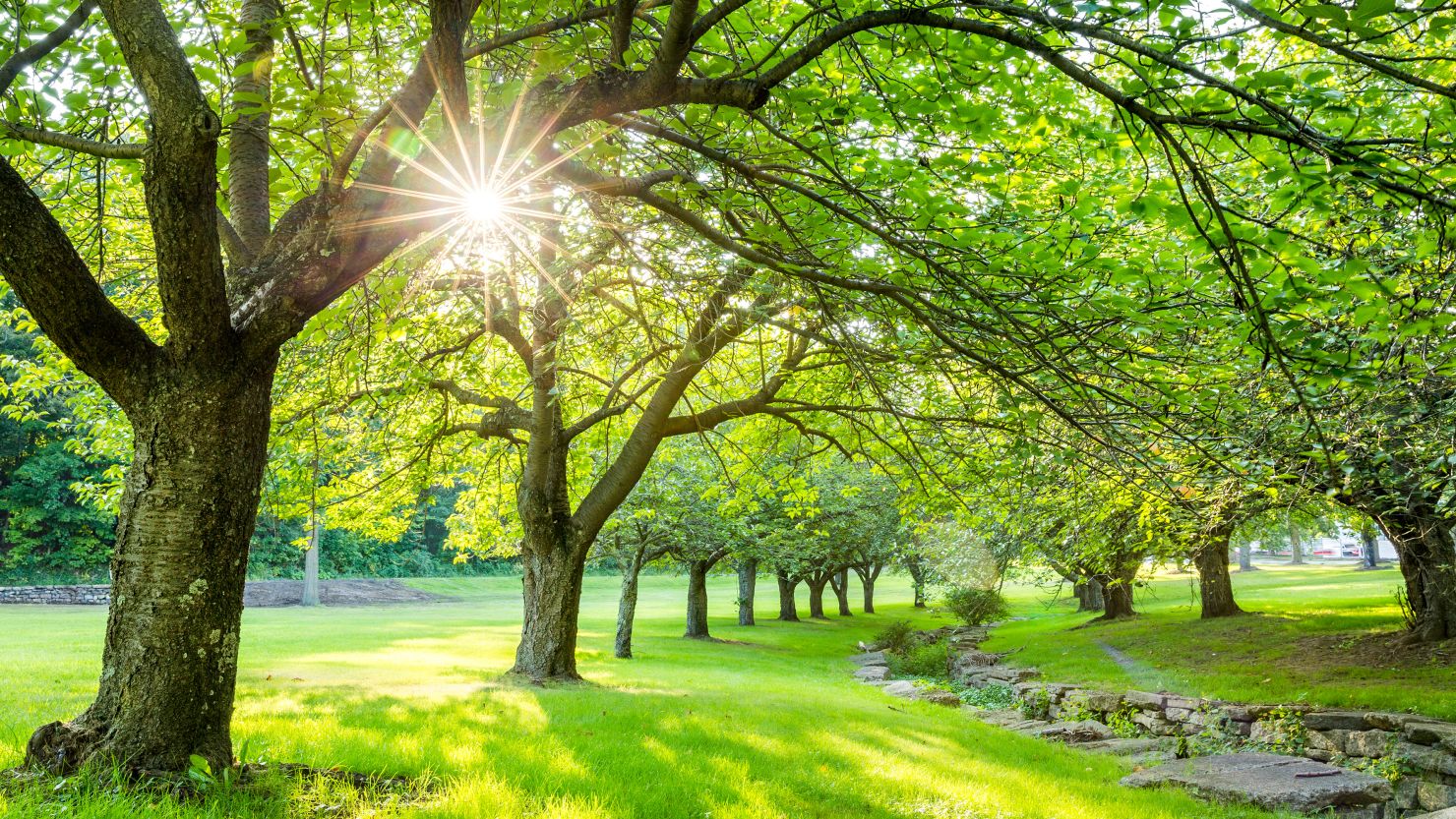There is something truly special about the time of year when the sun hangs high and the days feel long. It is, you know, that period when the air itself seems to hum with a different kind of energy, a warmth that settles deep down. This season, often thought of as the brightest and the one with the most heat, arrives right after the freshness of spring and makes its departure before the gentle shift into autumn. It is a time many look forward to, for all sorts of good reasons.
We often think of summer as this big, sprawling thing, a whole chunk of the year, but sometimes, it is the little moments, a bit like "of summer 5 seconds," that truly capture its essence. These are those quick flashes of sunshine, the sudden feeling of warmth on your skin, or the sound of distant laughter that really tell you it is here. We are going to take a closer look at what makes this time so unique, from how we measure it to what it means for our daily lives.
So, how do we really define this season? Is it just about the calendar, or is there more to it? We will explore the different ways people talk about summer, how it shows up in various parts of the world, and what makes it such a cherished time for so many. It is, actually, a fascinating mix of science, tradition, and just plain good feelings.
Table of Contents
- What Makes Summer, Summer?
- When Does the Warmth Arrive?
- The Sun's Long Embrace
- What We Do When the Days Stretch Out?
- The Feeling of Summer
What Makes Summer, Summer?
When we talk about summer, we are really talking about the part of the year that brings the most heat and the most light. It comes right after the fresh green growth of spring and before the leaves begin to turn in autumn. This is a time when the sun feels stronger, staying in the sky for longer stretches each day. It is, kind of, a period of maximum sunshine, which makes everything feel more open and alive. The days are noticeably longer, giving us more hours of daylight to enjoy whatever we might want to do outside.
This period of warmth is not just a feeling; it is something tied to how our planet moves around the sun. The earth has a tilt, you know, and as it goes on its yearly path, different parts of the world get more direct sunlight. When a hemisphere is tilted toward the sun, that part of the world gets its summer. This explains why, in the northern part of our globe, summer is happening while the southern part is having its winter, and vice versa. It is all about the angle of the sun's rays and how they hit the ground, warming things up quite a bit.
So, the meaning of summer, in a basic sense, is that season between spring and autumn. For many in the northern half of the world, this usually means the months of June, July, and August. But, as a matter of fact, there are a few ways to think about when summer truly begins and ends, which can be a little different depending on if you are looking at the sky or at a weather report. It is more or less about the sun's position and the general temperature trends that define this warm stretch of time.
When Does the Warmth Arrive?
The exact start of summer can be thought of in a couple of ways. One way is tied to the summer solstice, which is the day with the longest period of daylight in the year. This special day, you know, marks a point where the sun reaches its highest position in the sky for that part of the world. After this day, the amount of daylight we get each day starts to gradually become shorter. For those living north of the equator, this longest day typically happens in June. It is a moment when the sun feels like it is really giving its all, filling the days with so much light.
In the northern part of the world, people usually consider summer to be the period between June and September. This is when the weather is at its warmest, and the world outside feels bright and inviting. This general timeframe, you know, covers the months when most people are enjoying outdoor activities and a break from colder temperatures. It is a time when the natural world is really thriving, with plants and trees in full bloom, and animals being very active. This stretch of time is, arguably, the most popular season for many.
A Quick Look at Summer's Timing - of summer 5 seconds
When we talk about summer, there are, basically, two main ways to figure out its timing. One way is what we call "astronomical summer." This is based on the Earth's orbit around the sun and the tilt of its axis. Astronomical summer begins at the summer solstice, which is the moment the sun reaches its highest point in the sky for the year. This year, for instance, that moment occurs on a Friday, June 20th, at 10:42 p.m. After that specific time, the days in the northern half of the world will, actually, begin to get a little shorter, even though the weather might still be very warm.
Then there is "meteorological summer." This way of defining the season is much simpler and is used by weather experts and for keeping records. Meteorological summer is exactly three months long. It starts on June 1st and continues right through August. This method, you know, divides the year into four equal parts based on temperature patterns, making it easier to compare seasons from one year to the next. It is a straightforward way to group the warmest months together, regardless of the exact celestial movements. So, while the sun's position might shift, the meteorological definition keeps things very neat and tidy.
The length of these meteorological seasons is, you know, always fixed, which makes them very predictable. Each season lasts about three months because we usually divide the year into 12 months, giving each of the four seasons a nice, even share. This means spring, summer, fall (or autumn), and winter each get their turn in a very consistent way. You can, for instance, use a season calculator to see the exact times and dates for spring, summer, fall, and winter in your own city. This gives you a precise sense of when each seasonal shift is happening, down to the minute, which is quite interesting.
The Sun's Long Embrace
During summer, the sun's presence is, really, quite strong. It is not just about the heat, but also about the extended hours of daylight. This means there is more time for everything. More time to be outside, more time for projects, and more time for just being. The sun seems to linger, painting the sky with long, drawn-out sunsets that feel like they last forever. This abundance of light changes the whole rhythm of the day. People tend to stay up later, and the evenings are often filled with activity, rather than quiet darkness. It is, kind of, a natural invitation to make the most of every moment.
The strength of the sun during this time also brings about a lot of natural changes. Plants grow with a vigor that is, you know, unmatched in other seasons. Flowers are in full bloom, and gardens are bursting with life. The warmth helps everything flourish, from the smallest blade of grass to the tallest tree. This vibrant growth creates a beautiful backdrop for all the activities that happen during the warmer months. It is, basically, a period of peak natural abundance, where the world feels very green and very much alive.
Different Ways to Mark the Season - of summer 5 seconds
It is fascinating how different parts of the world experience summer at opposite times of the year. When it is summer in the northern half of the Earth, the southern half is having its winter. This happens, you know, because of the Earth's tilt. So, while folks in, say, Canada are enjoying warm, sunny days in July, people in Australia are bundling up for colder weather. It is a clear reminder that our planet is always in motion, and the seasons are a result of that constant dance around the sun. This opposite timing makes it, in a way, possible for summer to always be happening somewhere.
The common way we divide the year into four seasons – spring, summer, fall (or autumn), and winter – is, you know, a very human way of organizing time. Because we have 12 months in a year, each season typically gets about three months. This helps us to make sense of the natural changes around us and plan our lives accordingly. This division provides a simple framework for understanding the year's progression, allowing us to anticipate the warmth of summer, the chill of winter, and the transitional periods in between. It is, essentially, a shared way of looking at the passage of time.
Beyond the strict definitions, there are, you know, many fun and interesting things to know about summer. These include everything from the kinds of activities people enjoy to the way nature behaves. For example, knowing about the summer solstice helps us get a sense of why the days are so long. These facts about summer, its dates, and the changes in weather and day length give us a broader picture of this season. It is, actually, quite fun to learn about all these little details that make summer what it is, adding a bit more depth to our appreciation of the season.
What We Do When the Days Stretch Out?
Summer is, without a doubt, a time for doing things. It is often seen as the best season for getting away, for attending big outdoor gatherings, for cooking outside, and for cooling off in the water. These activities are, you know, a big part of what makes summer so enjoyable for many. The longer days and warmer temperatures just invite us to step outside and experience life in a more open, relaxed way. There is a general feeling of freedom that comes with this season, encouraging people to take a break from their usual routines and just have some fun.
When the weather is warm and bright, people naturally gravitate towards being outdoors. This means parks fill up, beaches get busy, and backyards become places for gathering. The desire to soak up the sun and enjoy the pleasant temperatures is, you know, very strong. It is a time when communities often come alive with outdoor events, music, and food. This collective movement towards outdoor living creates a sense of shared experience, where everyone seems to be enjoying the same good weather and the same opportunities for leisure. It is, more or less, a universal feeling of wanting to be out in the sunshine.
Fun Times in the Sun - of summer 5 seconds
One of the great things about summer is how it encourages us to connect with others. Barbecues are, you know, a classic example. There is something about cooking and eating outdoors that brings people together in a very relaxed way. The smell of grilled food, the chatter of conversation, and the warmth of the evening air create a very special atmosphere. These gatherings are often casual, allowing for spontaneous fun and easy conversation. It is, basically, a time for making memories with friends and family, enjoying simple pleasures under the open sky.
And then there is the water. Splashing in a pool, swimming in a lake, or playing at the beach are, you know, quintessential summer activities. The heat of the season makes getting into cool water incredibly refreshing. These moments of cooling off are not just about beating the heat; they are also about playfulness and joy. Whether it is a quick dip or a long afternoon of swimming, being in or near water feels like a natural part of summer. It is, truly, a simple pleasure that many look forward to all year long.
Summer also brings with it a whole host of outdoor gatherings and celebrations. From music events in parks to local fairs, there is, you know, always something happening. These events often draw large crowds, creating a lively and festive atmosphere. People come together to enjoy good company, good food, and good entertainment, all under the warm summer sky. It is a time when towns and cities often feel more vibrant, with a constant hum of activity that lasts well into the evening. This sense of shared celebration is, actually, a big part of summer's appeal.
The Feeling of Summer
Beyond the facts and figures, summer has a certain feeling, a mood that sets it apart. It is a feeling of lightness, of freedom, and of possibility. The long days seem to stretch out, offering more time for relaxation and adventure. There is, you know, a general sense of optimism in the air, as if anything good could happen. This mood is infectious, making people feel more cheerful and open to new experiences. It is a time when the world feels a little less hurried and a lot more inviting, which is, in a way, very comforting.
The natural world during summer also contributes to this feeling. The vibrant green of the trees, the bright colors of flowers, and the clear blue skies create a very beautiful setting. The sounds of summer, like the buzzing of insects or the distant laughter of children, add to the atmosphere. It is a time when nature feels fully awake and alive, and we, as humans, tend to feel more connected to it. This connection to the natural world is, arguably, a big part of why summer feels so good, offering a sense of peace and wonder.
For many, summer is a time of renewal, a chance to recharge and enjoy simple pleasures. It is about slowing down just a little, spending time with loved ones, and making the most of the good weather. Whether it is a quiet evening on the porch or a lively gathering with friends, the moments of summer often feel precious. This season, you know, has a way of creating lasting memories, moments that we look back on with fondness. It is, pretty much, a time for living in the moment and appreciating the warmth and light that it brings.
The Essence of Those Brief Moments - of summer 5 seconds
When we think about "of summer 5 seconds," it is about capturing the quick, memorable flashes that define the season. It could be the sudden feeling of warmth from the sun on your face, the quick taste of a cold drink, or the fleeting sight of a butterfly in a garden. These small, sensory experiences are, you know, often what we remember most vividly. They are the tiny pieces that make up the bigger picture of summer, adding up to a feeling of joy and ease. It is, basically, about appreciating the small wonders that happen all around us during this special time.
These brief moments are, in a way, what make summer so rich. They are the little bursts of happiness that punctuate the longer days. A quick splash in a puddle, the sound of an ice cream truck, or the scent of freshly cut grass – each of these can, you know, transport us to the heart of summer in an instant. They remind us that even in a season defined by its length, it is the collection of short, delightful experiences that truly matters. So, paying attention to these fleeting sensations can make the whole season feel even more special, which is quite nice.
Related Resources:



Detail Author:
- Name : Prof. Leopoldo Wiegand
- Username : vbrown
- Email : maryam46@gmail.com
- Birthdate : 1976-05-27
- Address : 26857 Huels Terrace Apt. 552 New Lulubury, TN 18245
- Phone : +18182514165
- Company : Dooley, Crona and Bernier
- Job : Bookkeeper
- Bio : Nihil rerum omnis alias quo. Sit ut nemo molestiae minus quae. Molestias non quaerat dolore doloribus dignissimos voluptatibus. Temporibus incidunt consequatur nihil eum earum illum.
Socials
tiktok:
- url : https://tiktok.com/@stanton_real
- username : stanton_real
- bio : Repellendus iure maxime iure consequatur.
- followers : 6575
- following : 594
instagram:
- url : https://instagram.com/stanton_hand
- username : stanton_hand
- bio : Dolores autem optio qui magnam sint. Magnam incidunt minima dolor.
- followers : 3698
- following : 1575
linkedin:
- url : https://linkedin.com/in/hand2010
- username : hand2010
- bio : Maxime vel ut voluptatem voluptatem vero.
- followers : 5788
- following : 1535
twitter:
- url : https://twitter.com/stanton_hand
- username : stanton_hand
- bio : Et quaerat rem ea tenetur quia alias. Sint omnis et quis quo tenetur sequi. Fugit reprehenderit atque nemo cumque minus et.
- followers : 5758
- following : 2855